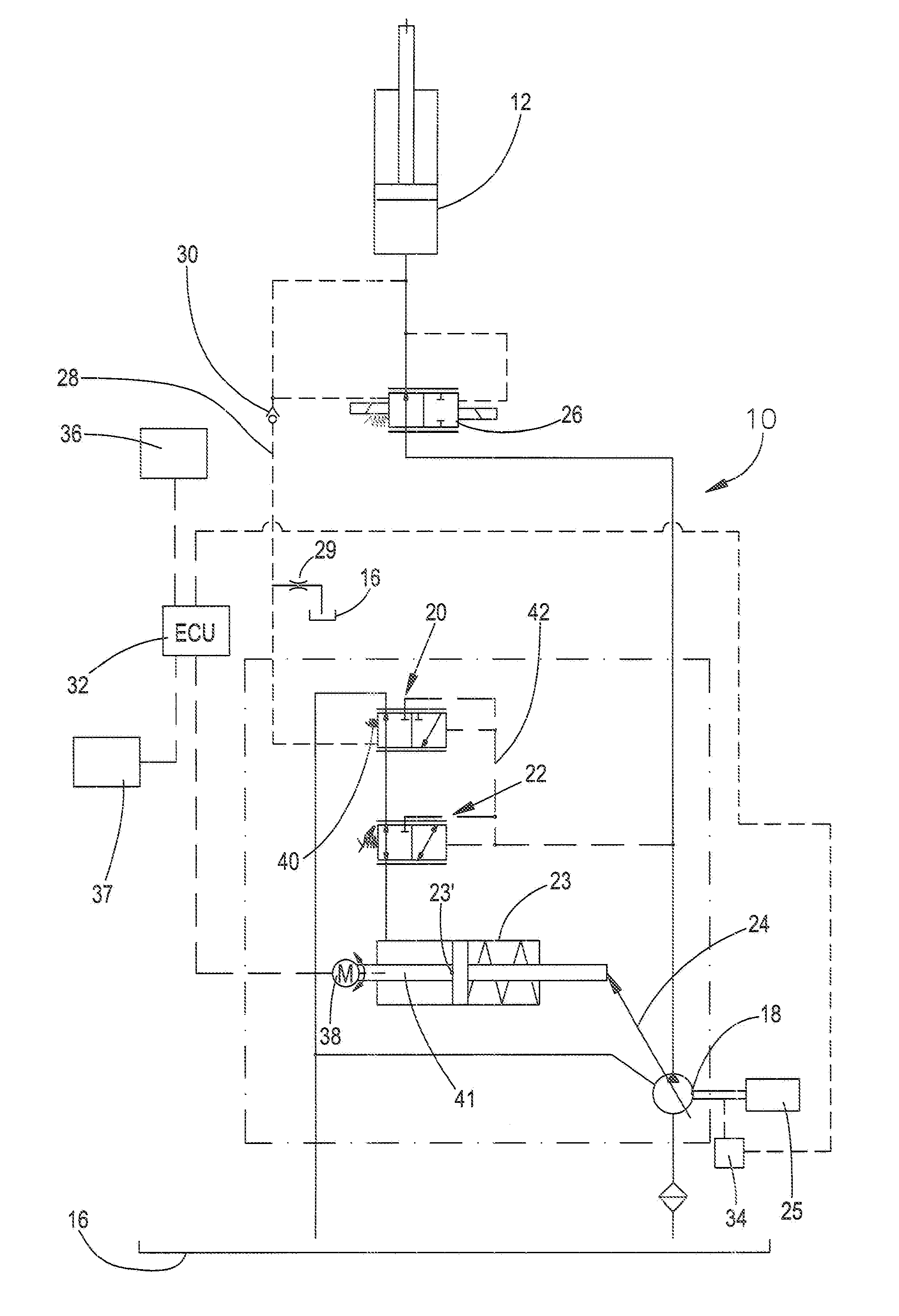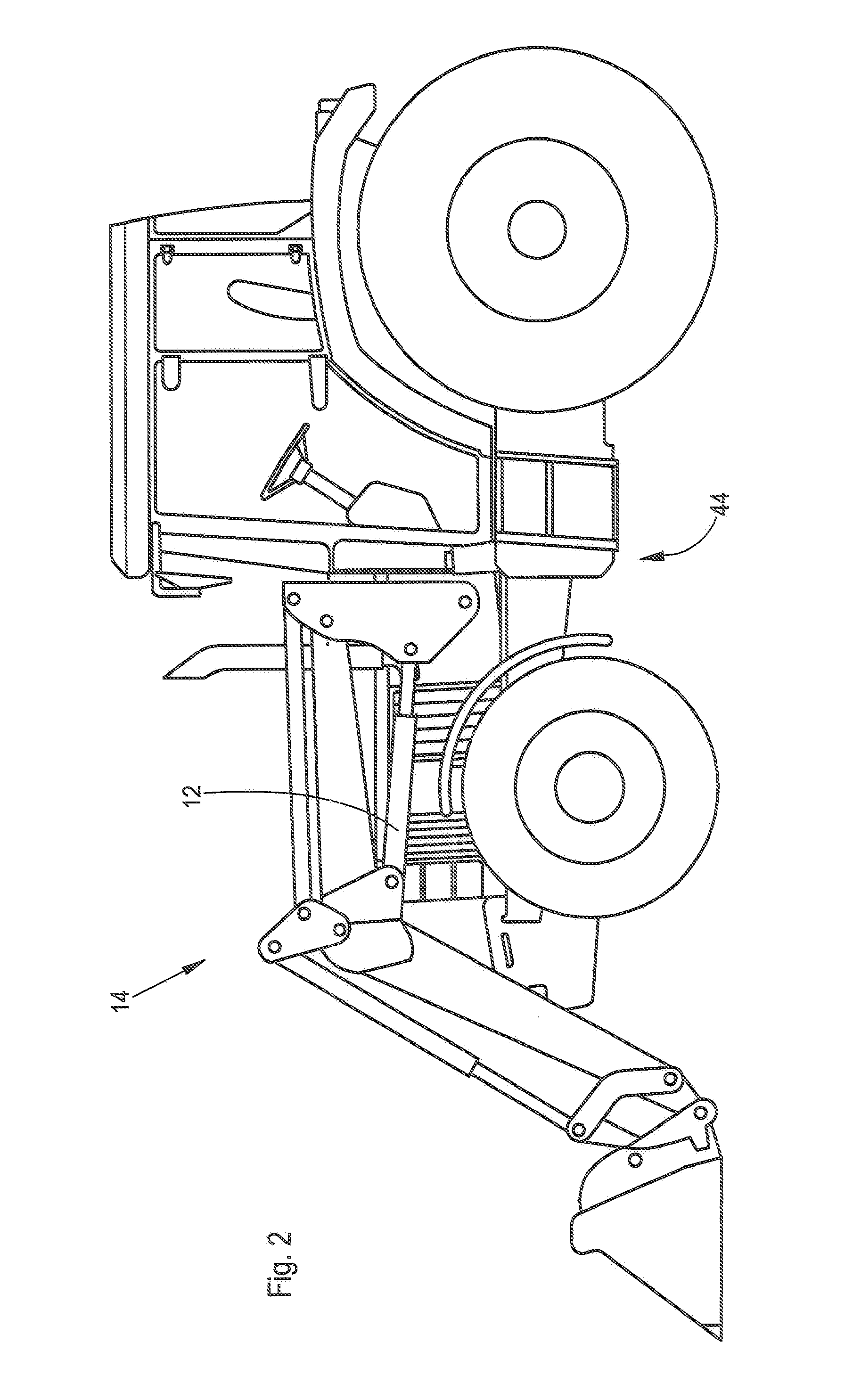Hydraulic system
a technology of hydraulic system and valve body, which is applied in the direction of fluid coupling, servomotor, coupling, etc., can solve the problems of high losses in lines and valves, and achieve the effects of easy handling, increased or decreased maximum flow rate of the pump, and great sensitivity
- Summary
- Abstract
- Description
- Claims
- Application Information
AI Technical Summary
Benefits of technology
Problems solved by technology
Method used
Image
Examples
Embodiment Construction
[0019]Referring to FIG. 1, the hydraulic system 10 supplies hydraulic fluid to a hydraulic consumer, such as a hydraulic cylinder 12, which lifts and lowers a front loader 14. The hydraulic system 10 includes a hydraulic reservoir 16, an adjustable or variable displacement hydraulic pump 18 with a flow rate controller 20 for the adjustment of a control pressure difference between the pump 18 and the cylinder 12, a pressure limiter 22 for the limitation of the operating pressure for the pump 18. The displacement of pump 18 is controlled by control or adjusting member 24, which is controlled by piston 23. Piston 23 engages a stop 23′ which limits the maximum displacement of the pump 18. The pump 18 is driven by an engine 25. A hydraulic control valve 26 controls communication between the cylinder 12 and the pump 18. A load pressure line 28 is connected between the cylinder 12 and the control valve 26, which is connected to the flow rate controller 20, where the load pressure line 28 i...
PUM
 Login to View More
Login to View More Abstract
Description
Claims
Application Information
 Login to View More
Login to View More - R&D
- Intellectual Property
- Life Sciences
- Materials
- Tech Scout
- Unparalleled Data Quality
- Higher Quality Content
- 60% Fewer Hallucinations
Browse by: Latest US Patents, China's latest patents, Technical Efficacy Thesaurus, Application Domain, Technology Topic, Popular Technical Reports.
© 2025 PatSnap. All rights reserved.Legal|Privacy policy|Modern Slavery Act Transparency Statement|Sitemap|About US| Contact US: help@patsnap.com



